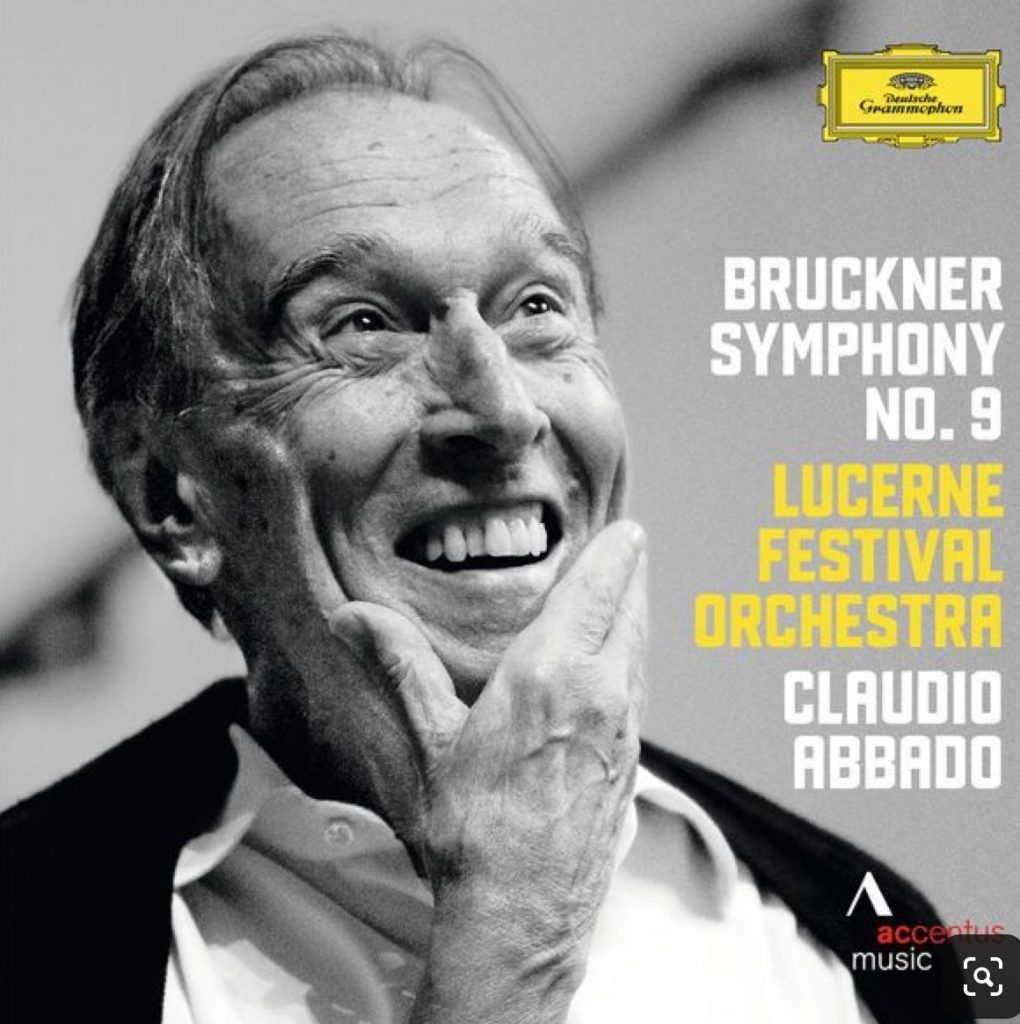
Jaap Nijstad is zoon van Kitty met andere man…
Leo Emiel Kok
Berchem, 7 January 1923 – Sankt Wolfgang, 12 May 1945
Reached the age of 22 years
Occupation: Artist
Documentaire. Jaap Nijstad bezoekt de plekken waar tekenaar Leo Kok tijdens de oorlog verbleef, leefde, tekende, trouwde, stierf en begraven is. Tekenaar Leo Kok werd samen met zijn vrouw Kitty de Wijze als een van de laatste gevangenen van Kamp Westerbork afgevoerd naar de vernietigingskampen in het Oosten. Leo overleefde de oorlog niet, zijn tekeningen wel.
Zie de tekening: ‘Stilte alstublieft nachtdienst slaapt’ Leo Kok / Westerbork ong. op 11.50 portret van de slapende Kitty de Wijze, verpleegster op de kinderafdeling daar…. en al vlug zijn echtgenoot….
Jaap Nijstad bezoekt de plekken waar tekenaar Leo Kok tijdens de oorlog verbleef, leefde, tekende, trouwde, stierf en begraven is.
Tekenaar Leo Kok werd samen met zijn vrouw Kitty de Wijze als een van de laatste gevangenen van Kamp Westerbork afgevoerd naar de vernietigingskampen in het Oosten. Leo overleefde de oorlog niet, zijn tekeningen wel.
Na de oorlog hertrouwt Kitty en krijgt ze twee kinderen. Jaap Nijstad is één van die twee. In deze documentaire zien we zijn zoektocht naar het leven en werk van de eerste man van zijn moeder. Jaap bezoekt de plekken waar Leo tijdens de oorlog verbleef, leefde, tekende, trouwde, stierf en begraven is.
Jaap’s zoektocht is gefilmd in de sneeuw en bittere kou tijdens de maanden januari en februari van dit jaar op de plekken waar Leo 68 jaar geleden in dezelfde periode en onder dezelfde barre winterse omstandigheden heeft geprobeerd te overleven: Kamp Westerbork, de concentratiekampen Auschwitz/Birkenau (Polen), Theresiënstadt (Tsjechië), Mauthausen en Ebensee (Oostenrijk).
Uitzending
zondag 5 mei 2013 17:35 uur, Nederland 2
Bekijk de uitzending hier via uitzending gemist
Meer over Leo Kok
Leo Kok was een begenadigd tekenaar en schilder. Hij tekende het kampleven in Westerbork. Vlak voor zijn deportatie werden de tekeningen van Leo gesmokkeld naar een adres in Nijmegen. Daar bleven ze bewaard voor het nageslacht.
Leo Kok stierf op 12 mei 1945. Dit was zes dagen na zijn bevrijding uit het concentratiekamp Ebensee in Oostenrijk. https://www.joodsmonument.nl/en/page/228601/leo-emiel-kok
————

Henryk Mikołaj Górecki (uitspraak: [ˈxɛnrɨk mʲiˈkɔwaj ɡuˈrɛtski]) (Czernica (Silezië), 6 december1933 – Katowice, 12 november2010) was een Poolsecomponist in de klassieke traditie en een muziekpedagoog. Górecki wordt beschouwd als een muzikale voorloper van de avant-garde en vond met zijn nadrukkelijk eenvoudige muziektaal en zijn religieuze composities een groot publiek.
Levensloop
Górecki studeerde in Katowice compositie aan de muziekacademie van Katowice bij Bolesław Szabelski, een leerling van Karol Szymanowski. Hij debuteerde in 1958 bij het belangrijkste Poolse festival voor nieuwe muziek, de “Warschause Herfst“, met zijn werk Epitafium voor gemengd koor en ensemble. In het volgende jaar beleefde zijn 1e symfonie voor strijkorkest haar première.
Lange tijd werd Górecki’s werk overschaduwd door dat van Krzysztof Penderecki en Witold Lutosławski, maar in de jaren 60 kreeg Górecki een reeks internationale onderscheidingen, waaronder de eerste prijs bij de Biënnale in Parijs en bij het Internationale Componisten Podium van de UNESCO.
Vanaf 1965 doceerde hij partituurspel en compositie aan zijn “alma mater”, de muziekacademie van Katowice. In 1975 werd hij er directeur met de titel “professor”. In 1979 nam hij echter ontslag als openlijk protest tegen de weigering van de autoriteiten van de toenmalige Volksrepubliek Polen om paus Johannes Paulus II in Katowice te ontvangen. Toen kort daarna de paus wel een bezoek aan Krakau mocht brengen, werd daarbij Górecki’s voor deze gelegenheid geschreven psalm Beatus Vir uitgevoerd. Hij bleef kritiek uitoefenen op het communistische bewind en componeerde in 1981 zijn Miserere voor groot koor om aandacht te vragen voor het geweld dat tegen de beweging Solidarność was uitgeoefend. Voor een volgend bezoek van de paus aan Polen componeerde hij in 1987 het koorwerk Totus Tuus.
Zijn internationale doorbraak kwam in 1992 met de Symfonie nr. 3 Symfonią pieśni żałobnych (Symfonie van treurliederen), die hij al in 1976 gecomponeerd had in opdracht van de Südwestfunk Baden-Baden (voorganger van de huidige Südwestrundfunk). De opname hiervan werd een bestseller in een uitvoering met de London Sinfonietta en sopraan Dawn Upshaw onder leiding van dirigent David Zinman en belandde zelfs in diverse hitparades.
Voor Nederland was het dirigent Reinbert de Leeuw die een lans brak voor de componist en diens werk op het programma zette. In een documentairereeks van regisseur Frank Scheffer is hiervan verslag gedaan.
In 1994 werd Górecki eredoctor van de Universiteit van Warschau, in 2000 van de Jagiellonische Universiteit, Krakau en in 2004 van de katholieke universiteit van Lublin. Hij was ereburger van Rybnik.
Op 5 juni 2010 stond de wereldpremière van de Symfonie nr. 4 door het Radio Filharmonisch Orkest onder leiding van Jaap van Zweden gepland. Door ziekte was de componist niet in staat om dit werk te voltooien, in 2015 beleefde dit werk echter alsnog zijn première nadat zijn zoon Mikołaj Górecki het werk voltooide.
Stilistische ontwikkeling
Górecki begon eerst met dodecafonische werken, maar al spoedig ging hij over om ook andere parameters zoals ritmiek en dynamiek reekstechnisch te organiseren. Omstreeks 1965 stopte hij met het seriële componeren en begon hij het muzikale materiaal tot zo weinig mogelijk elementen te beperken. Repetitieve structuren, eenvoudige reekstechnieken, de bezinning op volksmuzikale of geestelijke bronnen bestempelden voortaan zijn werken. Het katholicisme is de basis van de meeste van zijn werken vanaf de jaren 70 en 80, werken die de tonaliteit weer brede ruimte geven.
Deze wending in zijn werk was verbonden met een voor een eigentijdse componist buitengewone populariteit. De traditie van de nationale Poolse muziek werd voor Górecki met de jaren steeds belangrijker. Werken als zijn Muzyka staropolska (Oude Poolse muziek) uit 1969 zijn de uitdrukking van deze verbondenheid met de traditie. Górecki was medegrondlegger van de Poolse School, samen met Krzysztof Penderecki.
Trivia
De Britse muziekgroep Lamb heeft een nummer dat ‘Gorecki’ is getiteld. De leadzangeres Louise Rhodes schreef het lied nadat ze was geïnspireerd door Symfonie Nr. 3 van de Poolse componist. Het 2e deel, Lento e Largo, van Symfonie Nr. 3 is te horen in de film Altiplano en staat ook de bijbehorende soundtrack. De uitvoering met Dawn Upshaw verwieft grote bekendheid.
Composities
Werken voor orkest
Symfonieën
- 1959 Symfonia “1959” (nr. 1), voor strijkorkest en slagwerk, op. 14
- 1972 Symfonia nr. 2 “Kopernikowska”, voor sopraan, bariton, gemengd koor en groot orkest, op. 31 – tekst: (Latijn) inclusief Psalm Nr. 145, 6, 135 (verse 7-9) en een uittreksel uit het boek I van “De revolutionibus orbium caelestium” van Nicolaas Copernicus
- 1976 Symfonia nr. 3 “Symfonia pieśni żałosnych (Symfonie van treurliederen)”, voor sopraan en groot orkest, op. 36 – tekst: inclusief 15e-eeuwse klaagzang (lamentatie) van het Klooster van het Heilige Kruis (1e deel), de inscripties van een jonge gevangene in de muur van de cel in de Gestapo-gevangenis in Zakopane (2e deel) en een lied uit de regio Opole
- 2010 Symfonie nr. 4, bij Górecki’s dood onvoltooid – in 2011 voltooid en georkestreerd door zijn zoon Mikołaj Górecki
Concerten voor solo-instrument(en) en orkest
- 1956 rev.1959 Piesni o radosci i rytmie (Liederen van vreugde en ritme), voor 2 piano’s en kamerorkest, op. 7
- 1980 Koncert na klawesyn (Concert), voor klavecimbel en strijkorkest, op. 40
- 1992 Concerto-Cantata, voor dwarsfluit en orkest, op. 65
Andere werken voor orkest
- 1960 Scontri, voor orkest, op. 17
- 1963 Trzy utwory w dawnym stylu (Drie stukken in oude stijl), voor strijkorkest
- 1964 Choros I, voor strijkorkest, op. 20
- 1965 Refren (Refrein), voor orkest, op. 21
- 1969 Muzyka staropolska (Oude Poolse muziek), voor orkest, op. 24
- 1969 Canticuum graduum, voor orkest, op. 27
- 1973 Trzy tance (Drie dansen), voor orkest, op. 34
Missen, cantates en gewijde muziek
- 1971 Dwie piesni sakralne (Twee sacrale liederen), voor bariton solo en orkest, op. 30 – tekst: Marek Skwarnicki
- 1971 Dwie piesni sakralne (Twee sacrale liederen), voor bariton solo en piano, op. 30bis tekst: Marek Skwarnicki
- 1975 Amen, voor gemengd koor, op. 34
- 1979 Beatus Vir, psalm voor bariton solo, gemengd koor en groot orkest, op. 38 – Latijnse teksten, inclusief de Psalmen Nr. 142, 30, 37, 66 en 33 (opgedragen aan paus Johannes Paulus II)
- 1981 Miserere, voor groot gemengd koor, op. 44
- 1985 O Domina Nostra, meditaties over Onze Lieve Vrouw van Jasna Góra voor sopraan en orgel
Toneelmuziek
- 1959 Wieża samotności – tekst: Robert Ardrey, «Thunder Rock»
- 1959 Akwarium – tekst: Andrzej Wydrzyński
Werken voor koren
- 1958 Epitafium, voor gemengd koor en instrumentaal ensemble, op. 12 – tekst: Julian Tuwim
- 1972 Euntes ibant et flebant, voor gemengd koor, op. 32 – Latijnse teksten uit de Psalmen nr. 125, 6, 94
- 1972 Dwie piosenki (Twee liederen), voor koor met vier gelijke stemmen, op. 33 – tekst: Julian Tuwim
- 1979 Szeroka woda (Breed water), vijf folk songs voor gemengd koor, op. 39
- 1981 Wislo moja, Wislo szara, folk song voor gemengd koor, op. 46
- 1984 Kolysanki, voor gemengd koor, op. 49
- 1987 Totus Tuus, voor gemengd koor, op. 60
Vocale muziek
- 1954-1955/1995 Trzy pieśni do słów Marii Konopnickiej (Drie liederen na woorden van Maria Konopnickiej), voor zangstem en piano, op. 68
- 1956 Trzy piesni (Drie liederen), voor middenstem en piano, op. 3 – tekst: Juliusz Slowacki en Julian Tuwim
- Do Matki (Aan de moeder)
- Oda do wolnosci (Ode aan de vrijheid)
- Ptak (Een vogel)
- 1960 Monologhi, voor sopraan en drie groepen van instrumenten, op. 16 – tekst: van de componist
- 1963 Genesis III: Monodramma, voor sopraan, 13 slagwerkers en zeven contrabassen, op. 19, Nr. 3
- 1971 Ad Matrem (Do Matki), voor sopraan solo, gemengd koor en orkest, op. 29 – tekst: van de componist
- 1990 Dobranoc (Goede nacht), voor sopraan, altfluit, piano en 3 tamtams, op. 63
- 1996 Trzy fragmenty do słów Stanisława Wyspiańskiego (Drie fragmenten naar woorden van Stanisław Wyspiański), voor zangstem en piano, op. 69
Kamermuziek
- 1956 Variazioni, voor viool en piano, op. 4
- 1956 Quartettino, voor 2 dwarsfluiten, hobo en viool, op. 5
- 1956 Sonatina w jednej czesci (Sonatina in een beweging), voor viool en piano, op. 8
- 1957 Sonata na dwoje skrzypiec, voor twee violen, op. 10
- 1957 Concerto, voor vijf instrumenten en strijkkwartet, op. 11
- 1962 Genesis I: Elementi, voor drie strijkers, op. 19, Nr. 1
- 1962 Genesis II: Canti strumentali, voor vijftien uitvoerenden, op. 19, Nr. 2
- 1967 Muzyczka II, voor 4 trompetten, 4 trombones, 2 piano’s en 5 slagwerkers, op. 23
- 1967 Muzyczka III, voor altviolen (ten minste drie), op. 25
- 1970 Muzyczka IV “Koncert puzonowy” (Concert), voor trombone, klarinet, cello en piano, op. 28
- 1977 Trzy male utworki (Drie kleine stukken), voor viool en piano, op. 37
- 1984 Recitatives en Ariosos “Lerchenmusik”, voor klarinet, cello en piano, op. 53
- 1986-1990 Dla Ciebie, Anne-Lill (Voor jouw, Anne-Lill), voor dwarsfluit en piano, op. 58
- 1987 Aria, opera scène voor tuba, piano, tamtam en grote trom, op. 59
- 1988 Juz sie zmierzcha Muzyka na kwartet smyczkowy (I Kwartet Smyczkowy) – (Strijkkwartet Nr. 1), op. 62
- 1992 Quasi una Fantasia (Strijkkwartet Nr. 2), op. 64
- 1993 Kleines Requiem fur eine Polka, voor piano en dertien instrumenten, op. 66
- 1993-1995/2005 Strijkkwartet Nr. 3 …pieśni śpiewają, op. 67
- 1997 Kleine Phantasie, voor viool en piano, op. 73
Werken voor orgel
- 1968 Cantata, op. 26
Werken voor piano
- 1955 4 Preludes, op. 1
- 1956-1990 Sonata No. 1, op. 6
- 1959 Piec utworow (Vijf stukken), voor twee piano’s, op. 13
Filmmuziek
- 1960 Papierowa laleczka
- 1969 Jędrek
Bibliografie
- Bernard Jacobson: A Polish Renaissance (20th Century Composers), London: Phaidon Press LImited, 1996, 240 p., ISBN 978-0-714-83251-7
- Stewart Gordon: A History of Keyboard Literature. Music for the Piano and its Forerunners, New York: Schirmer Books, 1996, 566 p., ISBN 978-0-534-25197-0
- Jacques-Emmanuel Fousnaquer, Christian Leble, Claude Glayman: Musiciens de notre temps depuis 1945, Paris: Editions Plume, 1992, 542 p., ISBN 2-908034-32-8
- Franco Rossi, Michele Girardi: Il teatro la Fenici : chronologia degli spettacoli 1938-1991, Venezia: Albrizzi Editore, 1992, 650 p., ISBN 88 317 5509 9
- Hanns-Werner Heister, Walter-Wolfgang Sparrer: Komponisten der Gegenwart, Edition Text & Kritik, München, 1992, ISBN 978-3-88377-930-0
- Brian Morton, Pamela Collins: Contemporary composers, Chicago: St. James Press, 1992, 1019 p., ISBN 1558620850
- James L. Limbacher. H. Stephen Wright: Keeping score : film and television music, 1980-1988 – (with additional coverage of 1921-1979), Metuchen, N.J.: Scarecrow Press, 1991. 928 p., ISBN 978-0-8108-2453-9
- Irina Lasoff, Lidia Rappoport-Gelfand: Musical life in Poland. The postwar years 1945-1977, New York: Gordon and Breach, 1991, 248 p.
- Wanda Holewik: Solowe partie wokalne w urworach wokalno-instrumentalnych Henryka Mikolaja Goreckiego, Zeszyty Naukowe. Akademia Muzyczna we Wroclawiu. 42 (1986), pp. 113-128.
- Marek Podhajski: Zamecanija o kompozitorskom stile G.M. Gureckogo, The Music Work. Brno 1985. pp. 181-189.
- Malgorzata Gasiorowska: Czas zatrzymany Henryka Goreckiego, Ruch Muzyczny. 27 (1983), Nr. 25, S. 3-4.
- Krzysztof Droba: Slowo w muzyce Goreckiego, Ruch Muzyczny. 25 (1981), Nr. 22, S. 3-4.
- Krzysztof Droba: Wielkosc : dziwnolsc (De Grote en de eigenaardigheid: de 3e symfonie en het klavecimbelconcert van Henryk Mikolaj Gorecki), Ruch Muzyczny. 24 (1980), Nr. 10, S. 7-8.
Externe links
- (en) Biografie en werklijst
- Titelbeschrijvingen in de bladmuziekcatalogus van de Muziekbibliotheek van de Omroep https://nl.wikipedia.org/wiki/Henryk_G%C3%B3recki
—–
Henryk Górecki (1933-2010), Pools componist (foto: Nonesuch)Nieuws, Europa, Cultuur, Klassieke muziek, Polen, Holocaust, Henryk Górecki, Symfonie van de Treurliederen, Katowice, Avantgardistische muziekstroming, Minimalisme, Filmmuziek – jan.vancriekinge
Poolse componist Henryk Górecki overleden
Vrijdag 12 november overleed de Poolse componist Henryk Górecki in een ziekenhuis in de Poolse stad Katowice aan de gevolgen van een slepende ziekte. Hij zou in december 77 worden. Górecki is bij het grote publiek vooral bekend van zijn Derde Symfonie uit 1976, ook de ‘Symfonie van de Treurliederen’ genoemd. Hij was een van de meest toonaangevende hedendaagse componisten.
Górecki werd op 6 december 1933 in Silezië geboren. Hij studeerde aan de Karol Szymanowski Muziekacademie van Katowice en werd aanvankelijk sterk beïnvloed door de avantgardistische muziekstroming van na de Tweede Wereldoorlog. In zijn jeugdwerken is de modernistische invloed van Luigi Nono, Karlheinz Stockhausen en vooral van zijn land- en leeftijdgenoot Krzysztof Penderecki goed hoorbaar.
Minimalisme
Vanaf het midden van de jaren zeventig veranderde Górecki’s stijl ingrijpend. De avantgardistische dissonanten maakten meer en meer plaats voor een heel eigen muziektaal die dicht aanleunde bij het minimalisme en de repetitieve muziek die vooral in de VS rond die tijd populair werd in de filmmuziek.
Zijn werken uit die periode vertonen ook verwantschap met Arvo Pärt, de componist van religieus geïnspireerde minimalistische muziek uit Estland. Door deze stijlwending werden de werken van Górecki veel toegankelijker voor een ruimer publiek. In 1979 werd ter gelegenheid van het eerste bezoek van de Poolse paus Johannes Paulus II aan Krakau zijn psalm Beatus Vir uitgevoerd.
Eerbetoon aan de slachtoffers van de nazi-terreur
Echt grote bekendheid kreeg de diepgelovige Górecki met zijn Derde Symfonie uit 1976. Dit werk voor sopraan en groot symfonisch orkest is opgevat als een muzikaal eerbetoon aan de slachtoffers van de Holocaust en de gruwelen van de nazi-terreur in Polen. Een deel van de gezongen tekst van de symfonie bestaat uit de woorden die een tienermeisje schreef op de muur van een Gestapo-cel om de bescherming af te smeken van de Maagd Maria.
Dit langzame, contemplatieve werk, groeide in 1992 uit tot een wereldhit in de uitvoering van sopraan Dawn Upshaw en de London Sinfonietta onder leiding van dirigent David Zinman. Van deze CD-opname werden wereldwijd meer dan een miljoen exemplaren verkocht. Een recordverkoop voor een klassieke CD.
Ook nu nog staat zijn Derde Symfonie, of de ‘Symfonie van de Treurliederen’, regelmatig op de affiche van klassieke concertpodia en worden fragmenten eruit gebruikt in gelegenheids- en filmmuziek.
Zoals wel vaker het geval is, bleef de rest van Górecki’s indrukwekkende oeuvre, dat naast symfonieën opvallend veel koormuziek bevat, veel meer in de schaduw. Hoewel Górecki voor een eigentijdse componist een buitengewone populariteit genoot in binnen- en buitenland.
Hedendaagse Poolse muziekschool
Werken als zijn Muzyka Staropolska (Oude Poolse muziek) uit 1969 zijn de uitdrukking van zijn diepe verbondenheid met de Poolse muziektraditie en tegelijk zijn wil tot radicale vernieuwing. Górecki mag zonder aarzeling de medegrondlegger worden genoemd van de Poolse hedendaagse muziekschool, samen met Krzysztof Penderecki.
In 1994 kreeg hij een eredoctoraat voor zijn gehele oeuvre van de Universiteit van Warschau, in 2000 volgde de Jagiellonische Universiteit van Krakau en in 2004 de Katholieke Universiteit van Lublin. Ook de Concordia Universiteit in Quebec verleende hem een eredoctoraat.
Op 5 juni 2010 stond de wereldpremière van zijn Vierde Symfonie gepland door het Nederlandse Radio Filharmonisch Orkest o.l.v. Jaap van Zweden. Door zijn aanslepende ziekte was Górecki echter niet meer in staat om dit werk te voltooien.
Vrijdag overleed hij op 76-jarige leeftijd in een ziekenhuis in Katowice. Beata Jankowska-Burzynska, de woordvoerster van het Nationaal Orkest van de Openbare Radio van Katowice, dat de meeste van zijn werken heeft gecreëerd, maakte de dood van de componist in de media bekend. https://www.dewereldmorgen.be/artikel/2010/11/17/poolse-componist-henryk-gorecki-overleden/
· John Axelrod · Henryk Górecki Gorecki: Symphony No. 3 Isabel Bayrakdarian
Symphony No. 3, Op. 36 (1976) ‘Symphony of Sorrowful Songs’: I. Lento – Sostenuto tranquillo ma…
Symphony No. 3, Op. 36 (1976) ‘Symphony of Sorrowful Songs’: I. Lento – Sostenuto tranquillo ma cantabile · John Axelrod · Henryk Górecki Gorecki: Symphony No. 3 ‘Symphony of Sorrowful Songs’ ℗ 2012 Sony Music Entertainment Germany GmbH Released on: 2012-05-28 Soprano: Isabel Bayrakdarian Associated Performer: Danish National Symphony Orchestra
Symphony No. 3, Op. 36 (1976) ‘Symphony of Sorrowful Songs’: III. Lento – Cantabile semplice · John Axelrod · Henryk Górecki Gorecki: Symphony No. 3 ‘Symphony of Sorrowful Songs’ ℗ 2012 Sony Music Entertainment Germany GmbH Released on: 2012-05-28 Soprano: Isabel Bayrakdarian Associated Performer: Danish National Symphony Orchestra
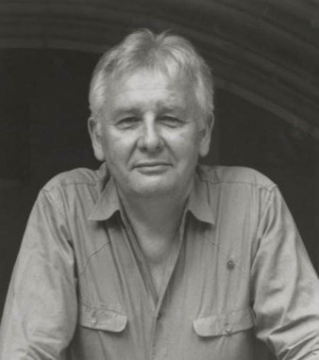

jij houdt van mei, zij zhij en zhei lagte, in mij…. primavera
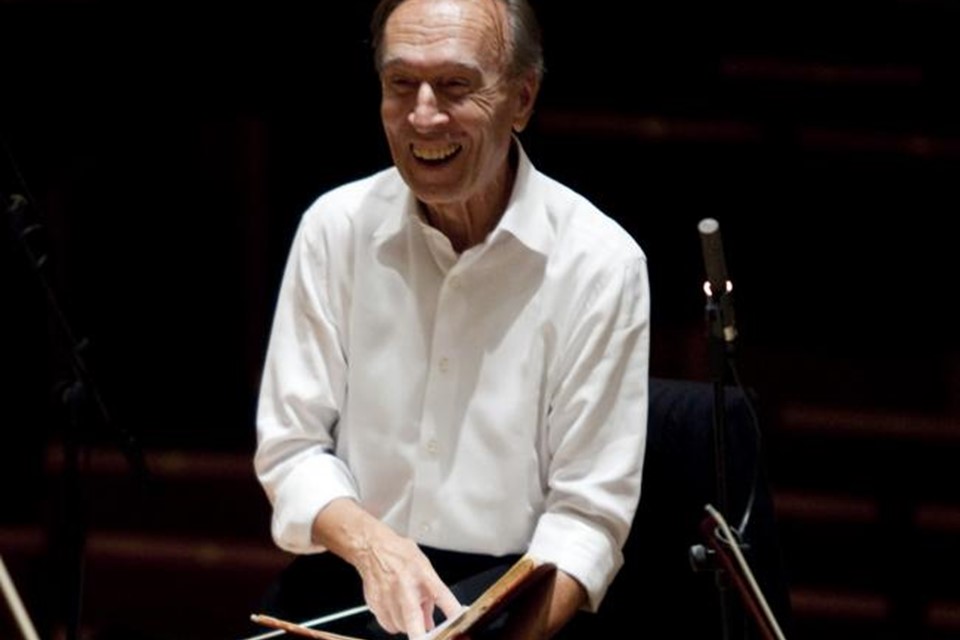
Mahler – Rückert-Lieder : Ich bin der Welt abhanden gekommen | Claudio Abbado | Lucerne 2009
Ich bin der Welt abhanden gekommen,
Mit der ich sonst viele Zeit verdorben;
Sie hat so lange nichts von mir vernommen,
Sie mag wohl glauben, ich sei gestorben!
Es ist mir auch gar nichts daran gelegen,
Ob sie mich für gestorben hält.
Ich kann auch gar nichts sagen dagegen,
Denn wirklich bin ich gestorben der Welt.
Ich bin gestorben dem Weltgetümmel
Und ruh’ in einem stillen Gebiet.
Ich leb’ allein in meinem Himmel,
In meinem Lieben, in meinem Lied.
16 augustus 1901
Voor de wereld ben ik voorgoed verloren,
Met haar heb ik voorheen veel tijd verdaan;
Ik heb zo lang al niets van mij laten horen,
Zij kan wel denken, het is met mij gedaan!
Er is mij ook volstrekt niets aan gelegen,
Of men mij voor gestorven houdt.
Ik kan ook volstrekt niets inbrengen daartegen,
Want werkelijk voor de wereld ben ik reeds koud.
Ik heb verlaten ’s werelds gewemel,
En rust nu in een stil gebied!
Ik leef alleen in eigen hemel,
In eigen liefde, in eigen lied.
https://nl.wikipedia.org/wiki/R%C3%BCckert-Lieder
Johann Michael Friedrich Rückert (Schweinfurt, 16 mei 1788 – Neuses bei Coburg, 31 januari 1866) was een Duitse dichter, vertaler en taalwetenschapper. https://nl.wikipedia.org/wiki/Friedrich_R%C3%BCckert
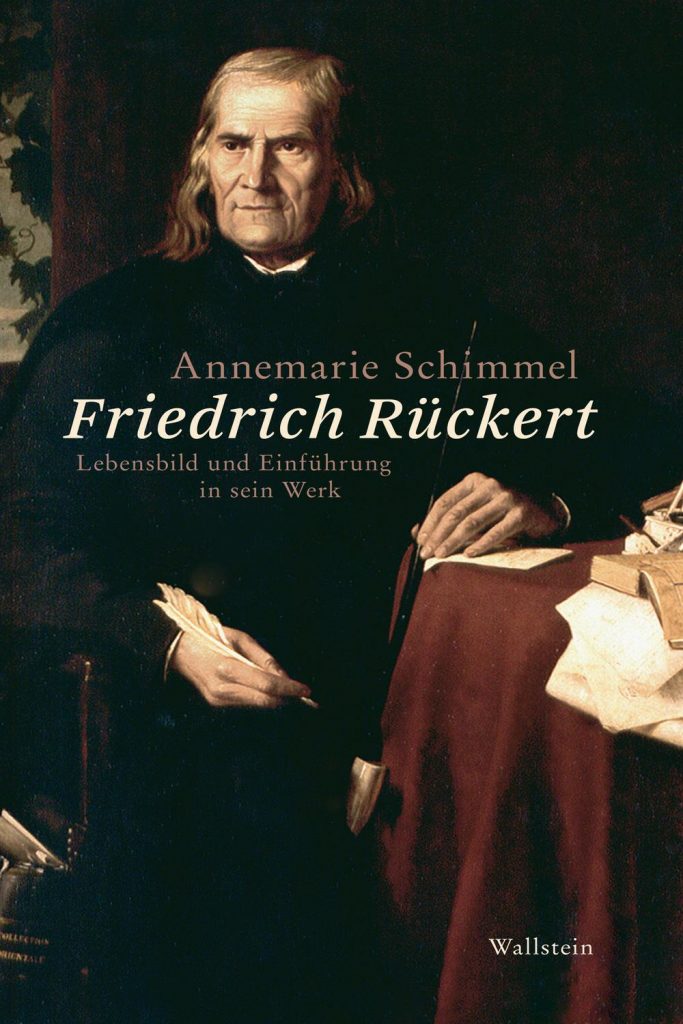
Apigian-Kessel: Behind the Scenes with Bayrakdarian and Kradjian
It was the day before the Dec. 4 benefit concert by world-famous opera star Isabel Bayrakdarian and her pianist husband Serouj Kradjian at the Ford Performing Art Center for St. Sarkis Armenian Church.
Several interviews had been set up for the international stars in the local media and I was the last to have access to them. I sat waiting with excited anticipation in the elegant ambience of the Director’s Room at the Ritz Carlton as Ani Kasparian, my fellow committee member, kept me updated via cell phone of the couple’s eminent arrival on this whirlwind visit.
The hotel staff could not have been more attentive and willing to please. Everything about the setting was grand and beautiful, apropos, what one would expect for two performers who have been ensconced in some of the world’s finest hoteleries.
Quite soon a smiling, hair down, all-black clad young woman entered demonstrating her ability to make an entrance into any room with aplomb just as she does on stage, in full command. She was followed by her husband of five years, the prolific concert pianist. My eye for detail did not fail to notice that her jeans were not of the ordinary variety, more like a velour with the back pockets sporting sparkling detail. Definitely stylish, and the boots didn’t hurt her image either. Kisses were put on hold, no time for germs. We became just a roomful of fellow Armenians, but I had a mission.
She was used to being interviewed. For me it was the first time face to face, asking questions of people reaching this caliber of success. I settled down and quite soon discovered the interviewees were, just as I had been told, “very down to earth people.”
Bayrakdarian: “I am happy to be here for a beautiful cause.”
Conversation flowed freely with both offering insight into their lives and careers. The ice got broken quickly and laughter ensued when I noted that although they resided in Toronto, unlike some I knew Canadians did not live in igloos.
I began my interview with Kradjian. Bayrakdarian had informed the organizing committee that he was to get equal billing with her. It may have been a smart wifely move but Kradjian has earned that right. He has his own immense star power as a pianist.
He began his studies at age five and by age seven had won a national competition for young musicians. At 14, he earned a scholarship to study in Vienna, later earning a B.A. at the University of Toronto in piano performance. His extensive training continued in Germany and Spain. He speaks six languages and his wife is a close runner up.
Kradjian is a musicologist and a professionally trained concert performer with a master’s degree. He has appeared in major concert venues across the world. He is a master of the keyboard. A set of songs he reconstructed and arranged by beloved Armenian composer Gomidas Vartabed is described as “classy and strikingly effective,” while Bayrakdarian’s singing of them was “ravishing.” Their award-winning CD of these hauntingly beautiful arrangements includes prayers, love songs, and folk songs.
Combined, the couple has collected many awards and prizes, including a Grammy and several Junos.
Her formal voice training began at age 17, causing her to do a balancing act while earning an honors degree in biochemical engineering at the same time—a difficult task. Her voice coach urged her to try out for the Metropolitan Opera in 1997, where she won the National Council Award. In 2000, she won the Placido Domingo Competition with her career thereafter skyrocketing. No struggle existed as to what career path she would follow.
Kradjian was quick to dispel the myth that Gomidas was always a depressed individual. “He was a man with a great sense of joy for life, very cheerful, and in reading about him I discovered many jokes in his letters. He possessed a wonderful sense of humor until the events of the genocide,” he said.
They were aware of the Gomidas statue in downtown Detroit. His music is included in their concerts. They are dedicated to making known to the world the hauntingly beautiful music of Gomidas and other Armenian songs, as well. Their rendition of “Groong” and “Dle Yaman” come from their hearts and has a strong effect no matter what language you speak.
“Folk songs are the music of the common people,” said Bayrakdarian. “What difference does it make if the language is different?” For her, there is no acting. She takes on the role of the part she is playing. She has the required knowledge of the many languages in which opera is sung.
I asked the man with the beautiful blue eyes how he met the lovely Isabel Bayrakdarian. “I had known about her and asked her to join me in a project I was working on, and thereafter we married.”
Is she a diva? Tactfully he responded, “In her own way.”
“Can Isabel cook?” With his hands and laughter, he said, “She is a marvelous cook.” His wife is now standing and sipping water and waving her hands about, leaving no doubt to the answer although they both admitted he was a picky eater.
Their two-year-old son Ari has added a joyful new dimension to their lives. He often travels with them and when asked if they had a nanny, Bayrakdarian still standing quickly responded, “Only his mom or mine!” Kradjian has determined that Ari has a preference for Bach, Beethoven, and Mozart. “Who does he look like?” I asked. Again, Ari’s father smiled and pointed to himself, to which I responded, “You, but without the beard?”
Bayrakdarian and Kradjian were born in Lebanon and their arrival in Canada found them adapting quickly. As our conversation unfolded, Bayrakdarian explained that two of her brothers are doctors and her great-grandmother came from a long line of mid-wives.
When asked if her family had a musical tradition, she replied, “No, my mother was the director of the church choir in Lebanon, so Armenian Church music was my first musical experience. I love Armenian Church music, it makes one’s soul soar effortlessly.” Attending church was an important part of their upbringing. And now being parents to Ari, they make sure he is in church on Sundays.
“I am lucky to do what I am best at,” said Bayrakdarian. “I do not like to limit myself. I don’t want to reach a stage in my life where I regretted not attempting to do what I wanted and then find it is too late. Like others, I have had obstacles to overcome but you do it. I don’t know the concept of fear. The fact that as Armenians we have survived, that our language has gone on for hundreds of years is a testament to the strength of our church. The church always made me feel at home.”
“My Armenian uniqueness sets me apart from the rest. Our culture and art is so rich it empowers you. My compass is Armenian Church music You need a spark to get people’s attention. I try to apply how I sing Armenian music to everything I do. I am a risk taker. I always include Armenian music when I perform. It is identity showing.”
She continued, “Family and faith come first in our lives. It is instrumental on being grounded. I have a family member present at every performance and I always look for them in the audience from the stage.”
Me: “Who has inspired you?” Bayrakdarian: “Marilyn Horne. She has been generous, always willing to offer sound advice for me, a dear friend.”
Me: “Is there a difference between European and American audiences?” She said, “Europeans have hundreds of years of culture and are not afraid to show their displeasure. They can be nasty, Americans are more polite.”
I said to Kradjian, “I know your wife’s trip to the Republic of Armenia was very emotional as she sang in the churches and ancient ruins there. Does she have any aspirations to visit historic Armenia? Kradjian’s look told me otherwise as he responded, “Michele Legran, whose mother is Armenian, said, ‘I have problems visiting a country that has committed genocide.’”” That response said it all.
The Bayrakdarian-Kradjian concert on Dec. 4 can only be described as a superb success. They brought down the house of over 800 people and took two curtain calls to a standing ovation. There were many non-Armenians in the audience, but it was the Hyes there who celebrated the God-given talent this Armenian couple possesses. It is their Armenian heritage, their Armenian spirit, their Armenian survival that we all applaud.
And may God continue to shower his blessings on this exemplary family.
I couldn’t admire them more. They are absolutely down to earth and Hyegagan. Their story is kind of like a fairy tale, and who but the Armenians could need this boost?
https://armenianweekly.com/2010/01/15/apigian-kessel-behind-the-scenes-with-bayrakdarian-and-kradjian/
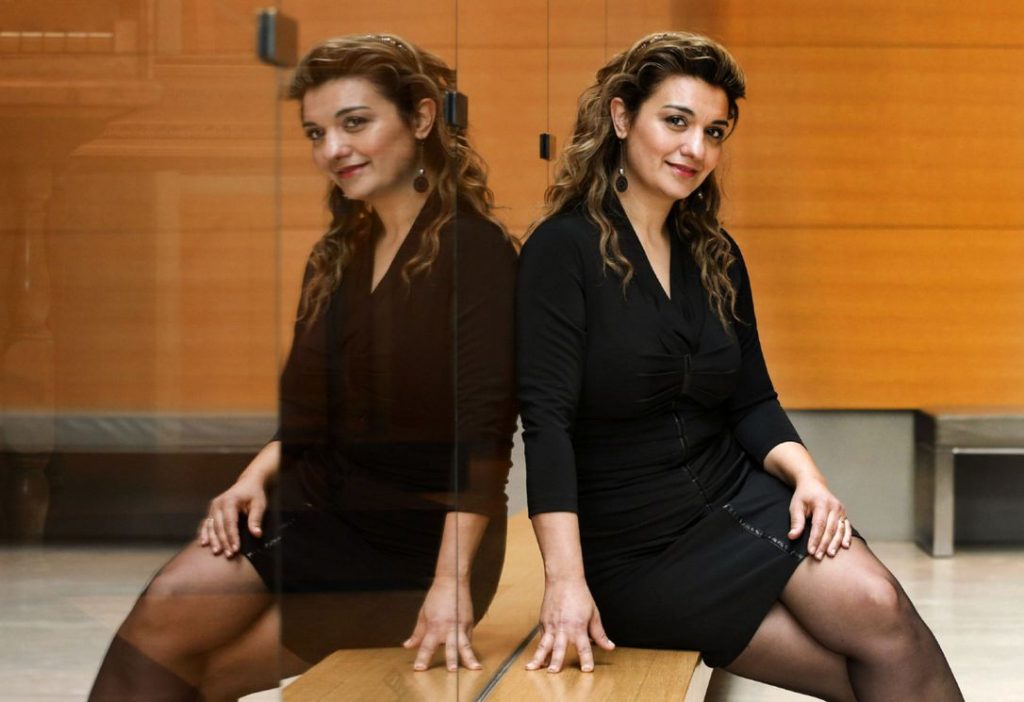
Wed., April 9, 2014timer3 min. read
Isabel Bayrakdarian is fascinated by the story of competing 18th-century opera stars, pitted against each other for money and fame.
The soprano has taken the story of Faustina Bordoni and Francesca Cuzzoni — enemies who sang works by the same composers and in the same operas — to heart.
“It’s too bad they had to compete,” says Bayrakdarian, who will perform an original work, TheRival Queens, from April 9 to 13 at Koerner Hall with Tafelmusik Baroque Orchestra.
“The culture of the time was that they were pitted against each other.”
Equally powerful, the two performers, who first sang together in 1718, had to have songs of equal importance in the productions.
Bordoni, a high mezzo-soprano, would have an aria, says Bayrakdarian, and then Cuzzoni, a soprano, would have to have one as well. Because their voices were different and they sang different roles, composers from Handel to Bononcini tailored the music to each singer.
That is something Bayrakdarian knows something about as her husband, musician Serouj Kradjian, has written music especially for her to sing (although she mostly sings established operatic works).
“They had two different voices,” says Bayrakdarian, who will sing Bordoni’s famous arias in the first half of the performance before changing gowns and reappearing to sing Cuzzoni’s songs.
“This is a showcase for the voice, not so much a drama,” says Bayrakdarian, adding she is not “acting” parts but singing signature songs of the two.
There was drama to spare in the divas’ lives.
Fans would boo and cheer when either performed but one night in 1727, the two were onstage together and the crowd erupted into a melee. The Princess of Wales, who was attending the London theatre, was shocked to see the two singers get into a fight.
“There was a slapfest onstage,” laughs Bayrakdarian. “A lot of ego was involved in this.”
Three years ago, she sat down with Tafelmusik’s Jeanne Lamon and former CBC producer Neil Crory to brainstorm what kind of work she would like to present with the orchestra.
Her last venture with them was Cleopatra in the 2003/04 season, a program of Baroque arias that was recorded and won a 2005 Juno Award.
Bayrakdarian felt the Bordoni-Cuzzoni conflict was a good vehicle for her. There was a lot of research involved for Tafelmusik librarian Charlotte Nediger, including finding original manuscripts created for the singers.
“This is a unique project and I am loving it,” says Bayrakdarian, who promises to do more of this in the future. “This is the pledge I made to myself, to create projects that are unique.”
The program has extensive notes by Bayrakdarian and Nediger detailing the story. The arias are “embellished” with instrumental music from London, Dresden and Venice, writes Nediger.
Bordoni went on to have a long and successful career, but Cuzzoni saw her career dwindle while debts mounted. A return to England in 1750 failed to revive her fortunes. Her voice was ruined.
Audience members are invited for a “talkback” session after the Wednesday performance.
When asked if she has a favourite, Bayrakdarian replies, “I have to be neutral.”
In the program, she writes, “Perhaps the 21st-century audience will once again choose their favourite singer, or perhaps they will accept and embrace them both, and end the rivalry once and for all.”The Rival Queens, Isabel Bayrakdarian with Tafelmusik Baroque Orchestra, is at Koerner Hall, April 9 at 7 p.m., April 10 and 12 at 8 p.m., April 13 at 3:30 p.m. Tickets: www.tafelmusik.org or 416-408-0208 https://www.thestar.com/entertainment/2014/04/09/isabel_bayrakdarian_sings_rival_divas_fighting_words.html
—–
Claudio Abbado (26 June 1933 – 20 January 2014) was an Italian conductor who was one of the leading conductors of his generation. He served as music director of the La Scala opera house in Milan, principal conductor of the London Symphony Orchestra, principal guest conductor of the Chicago Symphony Orchestra, music director of the Vienna State Opera, founder and director of Lucerne Festival Orchestra, founder and director of Mahler Chamber Orchestra, founding Artistic Director of Orchestra Mozart, music director of European Union Youth Orchestra, and principal conductor of the Berlin Philharmonic orchestra.
Early life and background
The Abbado family for several generations enjoyed both wealth and respect in their community. Abbado’s great-grandfather tarnished the family reputation by gambling away the family fortune. His son, Abbado’s grandfather, became a professor at the University of Turin. His grandfather re-established the family’s reputation and also showed talent as an amateur musician.
Born in Milan, Italy on 26 June 1933, Claudio Abbado was the son of violinist Michelangelo Abbado, and the brother of the musician Marcello Abbado (born 1926). His father, a professional violinist and a professor at the Giuseppe Verdi Conservatory, was his first piano teacher. His mother, Maria Carmela Savagnone, also was an adept pianist. Marcello Abbado later became a concert pianist, composer, and teacher at the Rossini Conservatory in Pesaro. His sister also exhibited talent in music, but did not pursue a musical career after her marriage. His other brother later became a successful architect.
Abbado’s childhood encompassed the Nazi occupation of Milan. During that time, Abbado’s mother spent time in prison for harbouring a Jewish child. This period solidified his anti-fascist political sentiments. Claudio himself is known for having a famous anecdote about how when he was just eleven years old he wrote “Viva Bartók” on a local wall which caught the attention of the Gestapo and sent them on the hunt for the culprit. His passionate opposition to fascism continued into his adult years. However, his musical interests also developed, with attendance at performances at La Scala, as well as orchestral rehearsals in Milan led by such conductors as Arturo Toscanini and Wilhelm Furtwängler. He later recalled how he hated seeing Toscanini in rehearsal.
Other conductors who influenced him were Bruno Walter, Josef Krips and Herbert von Karajan. It was not until hearing Antonio Guarnieri‘s conducting of Claude Debussy‘s Nocturnes that Abbado resolved to become a conductor himself. At age 15, Abbado first met Leonard Bernstein when Bernstein was conducting a performance featuring Abbado’s father as a soloist. Bernstein commented, “You have the eye to be a conductor.”
Personal life
From his first marriage in 1956, to singer Giovanna Cavazzoni, Abbado had two children: Daniele Abbado (born 1958), who became an opera director and Alessandra (born 1959). His first marriage was dissolved. From his second marriage, to Gabriella Cantalupi, Abbado had a son, Sebastiano. His four-year relationship with Viktoria Mullova resulted in Mullova’s first child, a son, the jazz bassist, Misha Mullov-Abbado Abbado’s nephew, the son of his brother, Marcello, is the conductor Roberto Abbado.
A great conductor illuminates music you thought you knew in a way that you couldn’t possibly have imagined. Here are 50 of the finest, with recording recommendations
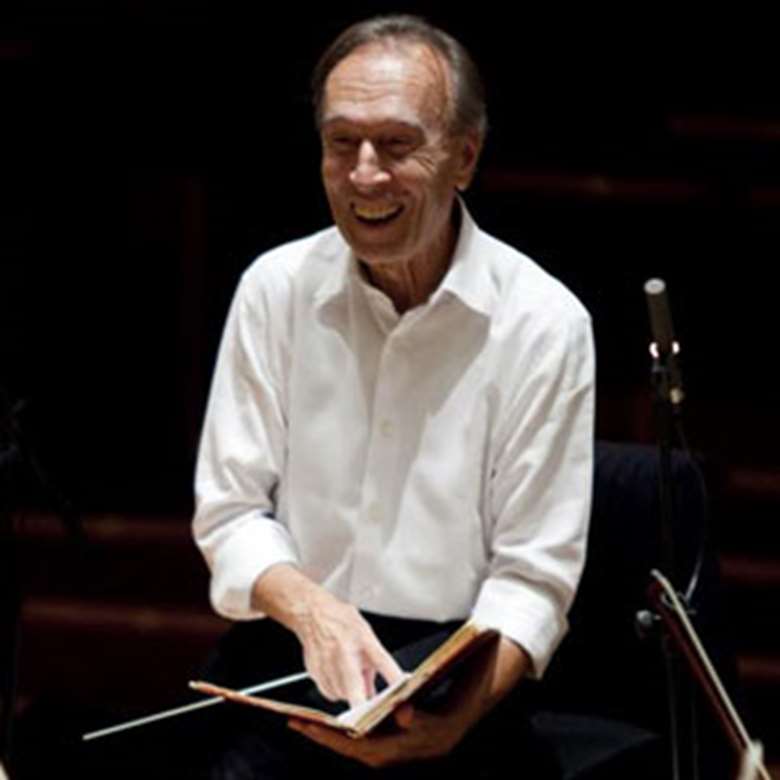
Claudio Abbado
Born and raised in Milan, Abbado studied with Hans Swarowsky in Vienna. He made his La Scala debut in 1960 and was the house’s music director from 1968 to 1986. He headed the Vienna State Opera (1986-91), London Symphony Orchestra (1979-87) and succeeded Karajan at the helm of the Berlin Philharmonic (1989-2002). He founded the European Union Youth Orchestra, Gustav Mahler Jugendorchester and re-established the Lucerne Festival Orchestra, and is closely associated with the Chamber Orchestra of Europe.
Recommended recording Bruckner Symphony No 9 Lucerne Festival Orchestra / Claudio Abbado (DG)
According to Gramo phone..
https://www.gramophone.co.uk/other/article/50-great-conductors?utm_term=Autofeed&utm_campaign=Echobox&utm_medium=Social&utm_source=Facebook&fbclid=IwAR0nRJ-DhJCvVwqE0RPDFuFILvBW6sTVgTmPfNBguC-tu8Xgdee3tMx75-k#Echobox=1635585084



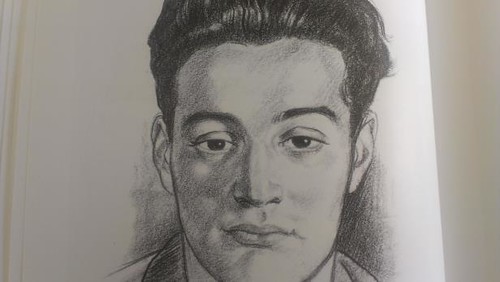
Bruckner: Symphony No. 9 in D Minor, WAB 109 – I. Feierlich. Misterioso (Live At KKL, Lucerne / 2013) · Lucerne Festival Orchestra · Claudio Abbado · Anton Bruckner Bruckner: Symphony No. 9 in D Minor, WAB 109 ℗ 2014 Accentus Music GmbH & Co. KG / Deutsche Grammophon GmbH Released on: 2014-01-01 Producer, Recording Producer, Studio Personnel, Editor: Georg Obermayer Studio Personnel, Recording Engineer: Urs Dürr Studio Personnel, Recording Engineer: Toine Mertens Composer: Anton Bruckner
Bruckner: Symphony No. 9 in D Minor, WAB 109 – I. Feierlich. Misterioso (Live At KKL, Lucerne /…
